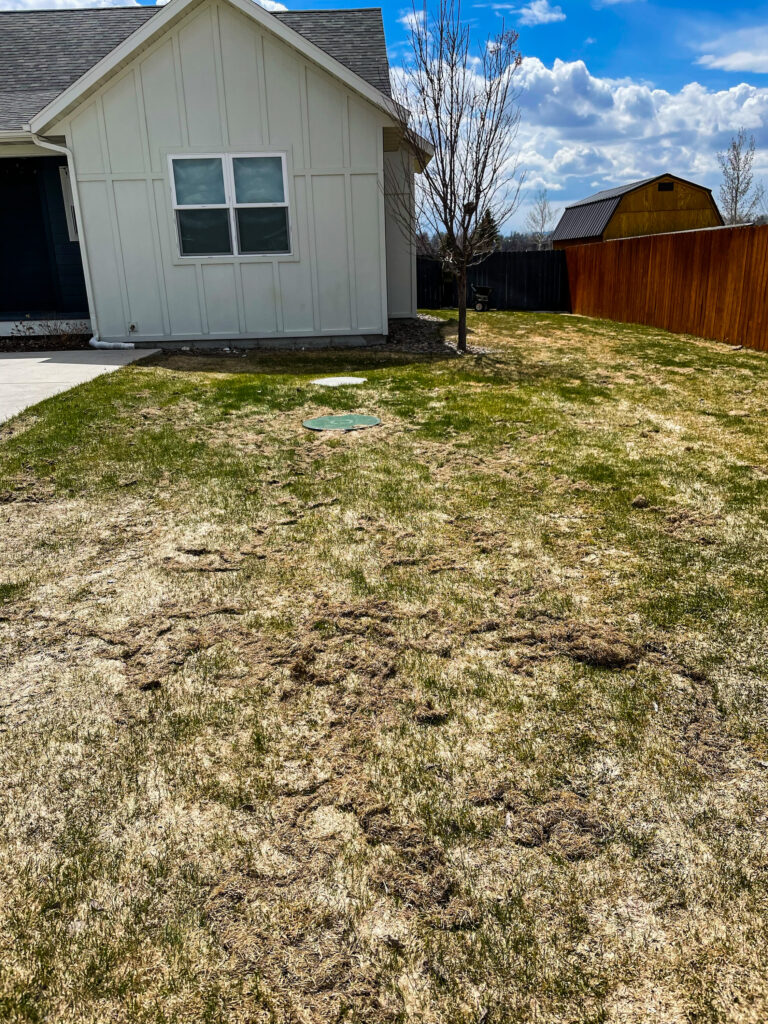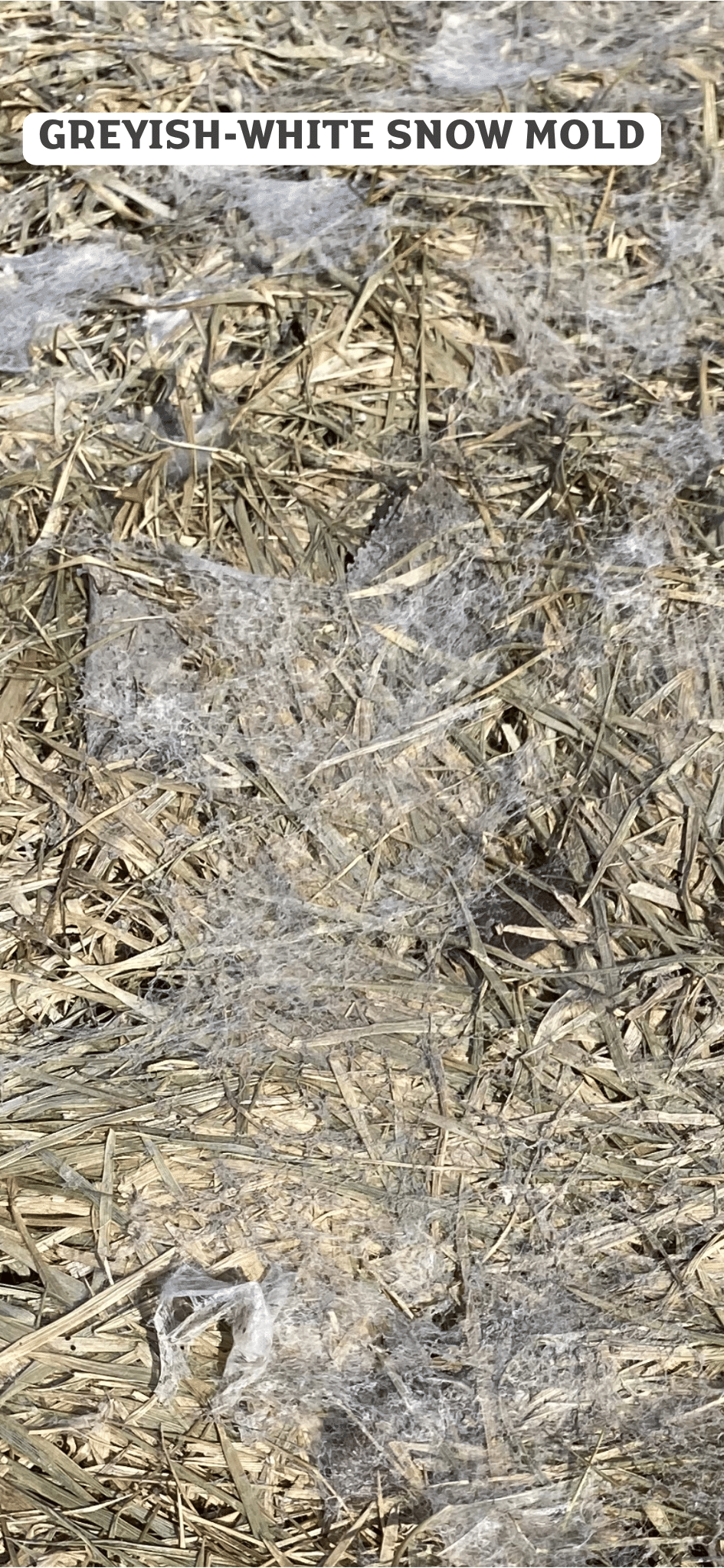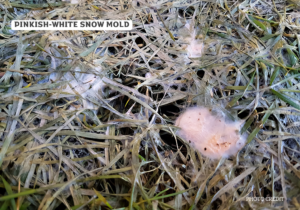Spring Lawn Problems and Best Practices

If you are anything like me you are probably wishing for more snow each Sunday night as you fill the new core shots on your skis or snowboard. However, while it may feel like things are finally starting to look like winter, warmer temps and longer days are right around the corner. So as you begin to hang up your skis and boots and bring your mountain bikes in for a fresh tune, it may also do you well to start thinking about your lawn. In this article, I will discuss a few of the common lawn problems we see with lawns in early Spring and how to prepare for those. That way come summer the only thing you have to think about with your lawn is the BBQ you want to have on top of it.
Vole damage
Each year after the snow melts you may notice small tunneling trails criss-crossing your lawn with loose dead grass atop them and wonder what caused it. The answer, Voles. These rodents normally live in the fields and prairies surrounding our lawns but in the winter they tunnel underneath the snow and take up residence in our lawns. The damage the voles cause occurs when they dig up and eat the crown of the grass effectively killing the grass blade which are the leftover remnants.
Now I know you might be thinking “Tate there hasn’t really been a snowpack in my yard. Do you think I will see vole damage this spring?” While I too am hopeful that the mild winter will reduce the vole damage this year it’s important to remember the words of Jeff Goldblum’s character in 1993’s Jurassic Park “life finds a way.” In the instance that you do see vole damage this year, don’t panic. By June your lawn should have recovered from that damage and have filled back in. However, if you want to take a few extra steps to speed up the process go ahead and rake up the dead grass that is on top of the lawn. Then, apply a half inch of topsoil over the affected area. This will ensure that the remaining grass roots in the area stay moist while the grass fills back in.
If you want to learn more about preventative vole measures click HERE to see a blog we wrote about that very issue.


Snow Mold
Snow mold is a pinkish-white or greyish-white type of fungus that affects cool-season turfgrasses and causes circle-like brown patches. The fungus that causes both types of snow mold is always in the soil but remains inactive during warmer temperatures. That is why as the snow begins to melt and temperatures range from 32 – 45 degrees, it creates an ideal environment for these fungi to release their spores. The main difference between the two types of mold is the extent of the damage they can potentially have on the turf. Gray snow mold can only harm the grass blade while pink snow mold has the potential to harm both the grass blade and the grass root. If you see either type of snow mold in your lawn, don’t panic, it’s not a death sentence. Most cases resolve on their own. If you want to take some form of action your first step should be to gently rake up the area that is affected by the mold, this will break up any compact grass and allow the soil to dry quicker and prevent more mold from growing. In the instance that you have pink snow mold and it was able to affect the grass to the root, reseeding the affected area will help to fill in the patch.


Watering
Almost all of the turf grasses you will find in Southwest Montana are considered cool season turf grass. This means that the grass is happiest during the cooler temperatures we experience in the spring (optimal temps are between 60-75 degrees). This means some of the best preventative measures for your lawn can be taken in the spring while the grass is at its peak growing season.
The first step you should take is turning on your sprinkler system early. I know at times during a Montana spring it may seem like we are getting a ton of rain, but from April of 2023 to June of 2023 Bozeman only got just over 4 inches of precipitation according to the National Weather Service (⅕ of the moisture our lawn needs). Our lawns are happiest when they get 1 ½ inches of water each week. So while it may seem like mother nature is taking care of our lawn for us, it’s actually struggling to survive with such little water.
To combat this we recommend turning your sprinklers on as soon as freezing night time temperatures are out of the weekly forecast generally speaking, mid to late – April. Once your system is up and running you should be shooting for 1 ½ inches of water per week on your lawn. If you are concerned that a section of your lawn might not be getting 1 ½ inches of water each cycle, ask one of our technicians for a rain cup when you see them this spring or you can put out an empty tuna can which will also hold about 1 ½ inches of water when full!
Fertilizing
One of the best things you can do for your lawn is to put down a spring fertilizer application. Not only will the fertilizer give your grass a nice green up and full look, it will also promote growth in the root systems which will help the lawn throughout the summer as well as create turf that will outcompete the weeds trying to grow in the same resource area as your lawn! Yard Guard uses a granular fertilizer blend, affording us the opportunity to apply this fertilizer in almost all conditions. Light snow, rain, shine we can apply in all of them. Since it’s a slow release fertilizer the product will naturally get “washed in” to your soil over time and the nutrients will be available for the grass to grab whenever it needs. We also have a Blended Organic fertilizer that will add more organics to your soil making more soil nutrients naturally available! If you want to hear more about our Blended Organic fertilizer give us a call!
I hope that these tips will help you feel empowered to get the lawn of your dreams this year and I look forward to seeing some of you this spring!
 Billpay
Billpay
